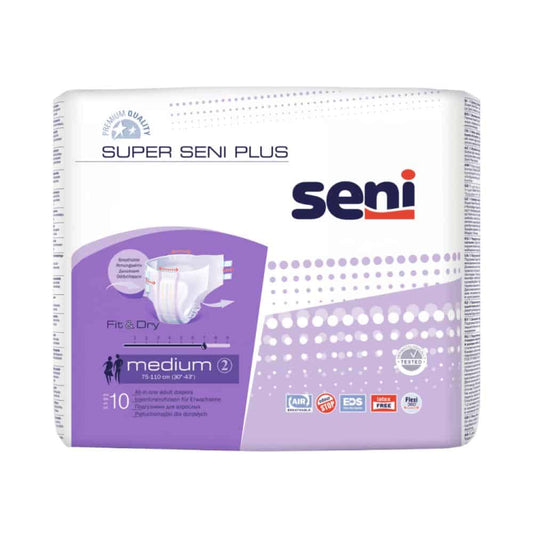
Digital detox: The way to conscious use of digital media
Digital media have become an integral part of our lives. Almost everyone is traveling in online forums every day, be it on social networks or on news sites and text plugs, everyone is always online and accessible. A text message is written and sent in seconds, the answer comes promptly. Communication has never been easier than today. But what has an essential advantage and great benefit in today's world can also have its dark side. Due to the permanent flow of information, digital flood can quickly occur, which can have a negative impact on the psyche. In this article, it is informed about what an abundance of media does with our health and how to reduce consumption and make its digital use more aware.
Digital flooding and what it does with us
Today's generations are already growing up with excessive media consumption and no longer know everyday life without technological devices. Even in the toddler, you can already handle a smartphone better than some adults from the older generation. This has an advantage, especially in today's world, since children and young adults already With modern technology are familiar and how they can take advantage of them in their personal and professional everyday life. But there is one disadvantage: they often did not learn adequately handling of these media because they were the first generation to grew up with this amount of technology. Many young people and young adults state that they feel overwhelmed and stressed by the abundance of social media and the mass and special content of news. Young people complain of physical impairments such as back and neck pain as well as psychosocial problems. A high media consumption is very time -consuming, so that it can easily be neglected by school tasks and fewer social contacts.

Screen time
According to current studies, the average screen time of young people often amounts to between six and eight hours. The intensive use has increased in recent years.

During the Corona pandemic, media use increased strongly. The long and many lonely phase of isolation made the online platforms to use and invited people to put most of their time, which they could no longer spend outside or with others, in online forums and applications. Platforms such as TikTok and Netflix became particularly popular. In the Lockdown, the schools were closed, which means that young people spent more and more time at home and whose focus was increasingly focused on the digital world.

But not only the young generation is affected by excessive media consumption. The generations that have already grown up and have long been in working life have to do with multiple technical devices every day. Be it the smartphone, as a main device for communication, the tablet to check the newspaper and messages or the work laptop with a second screen. Our eyes are not only privately, but also at work on screens. The main communication takes place via WhatsApp, teams and email.

Media use as relaxation after work
Even if people were available all day and have dedicated their attention to technical devices, they also spend their time in the media outside of working hours. Because this represents a form of relaxation and entertainment for many people. Of course, this significantly increases the screen time. In addition to physical symptoms in the neck and back, this can also lead to headaches and a feeling of exhaustion and promote sleep disorders. For some, a pronounced media consumption can offer many advantages, but it can also generate a certain pressure, for example through constant notifications and the feeling of always having to be accessible.
The way to digital detoxification
Now it is time to take concrete steps to implement a successful media detox. Very important here: a reduction in digital influence without completely avoiding the advantages of modern technology.
Step 1: create consciousness
Before the detox begins, it is important to make it clear why you want to do this detox.
- What bothers me about my consumption?
- How stressed do I feel by media consumption and the constant accessible?
- Do I have the feeling of maintaining too few social contacts through my media consumption?
- Do I want to structure my everyday life and my habits more?
Write down the reasons and see them as motivation to change your habits.
Step 2: Analyze the service life
If you come to the conclusion that you want to change your digital habits, it is important to get an overview of your digital usage behavior. To do this, you have to go to your device settings and call up your screen time. So you get an overview of which apps you use the most during the day. Most devices offer a detailed evaluation of your digital use. For example, you can see at what time of day and how long you spend on a special app.
Step 3: Objective
After you have analyzed your digital behavior, you have to set clear and realistic goals. Think about how much time you consciously spend on your smartphone, laptop or tablet. There are various ways to plan your consumption:
- Determine a time from which you can no longer use digital media. So you make sure that from this time you can only do activities "offline".
- You can also set an hourly limit. This function is available in most technical devices. For example, you can sit on a certain application of one hour. When this workload is used up, you only use it the next day. With this method you reduce your consumption, but you are not mandatory when or until when you can consume.
- The last method that efficiently restricts your media consumption is to insert a media -free day. For example, Sunday would offer itself here, because then the chance of missing something very important is not that big. It has the advantage of being completely stress -free and unreachable for a whole day and using the full time for other things.

Try these different options and find the right one for you. It probably takes some time to get used to this change. Take a few minutes at the end of every week to reflect on your new habits and possibly adapt something. What worked well and what else could be changed?
Every beginning is difficult
It may be a little more difficult for you at the beginning to stick to your newly set goals and to consciously consciously consciously consciously conscious the media. Here are a few tips that can make it easier for you to change.
Find alternatives that you enjoy and that you can do offline:
- Movement: Physical activities are particularly good as a contrast to sitting in front of technical devices. For example, you could exercise a certain sport or take regular walks and bike tours in nature. Outdoor activities can be a pleasant change from digital media. It is not uncommon for minor injuries that occur in sporting activities. That is why it is advisable to make the right first aid equipment, such as the Holthaus Medical active bandage bag to have at hand.
- creativity: Drawing, writing or photography can also have a relaxing effect on us.
- Wellness: Instead of sitting in front of your cell phone or television in the evening after work, you can specifically do something else to relax. A warm bath, tea and targeted breathing exercises or mediations are also good alternatives. Try it with the use of scents. A few drops of the Dr. Cup fragrance oil Can help relax and reduce the mind and body and reduce the stress of the day.

The way to use digital media more consciously
In our modern world, digital devices can no longer be considered from our professional and private everyday life. It represents a practical tool to do tasks faster or to network globally. But this permanent connectivity also brings disadvantages. The question is: what can you do about it? A digital detox does not mean completely avoiding the advantages of the technology, but using it more specifically and more consciously. Through the things that were conveyed in this article, you should now be easier From the digital world Can switch off and devote you more things that are outside of online platforms. Because with the conscious benefit of digital technologies, we can gain more time for the essential things in life.





























